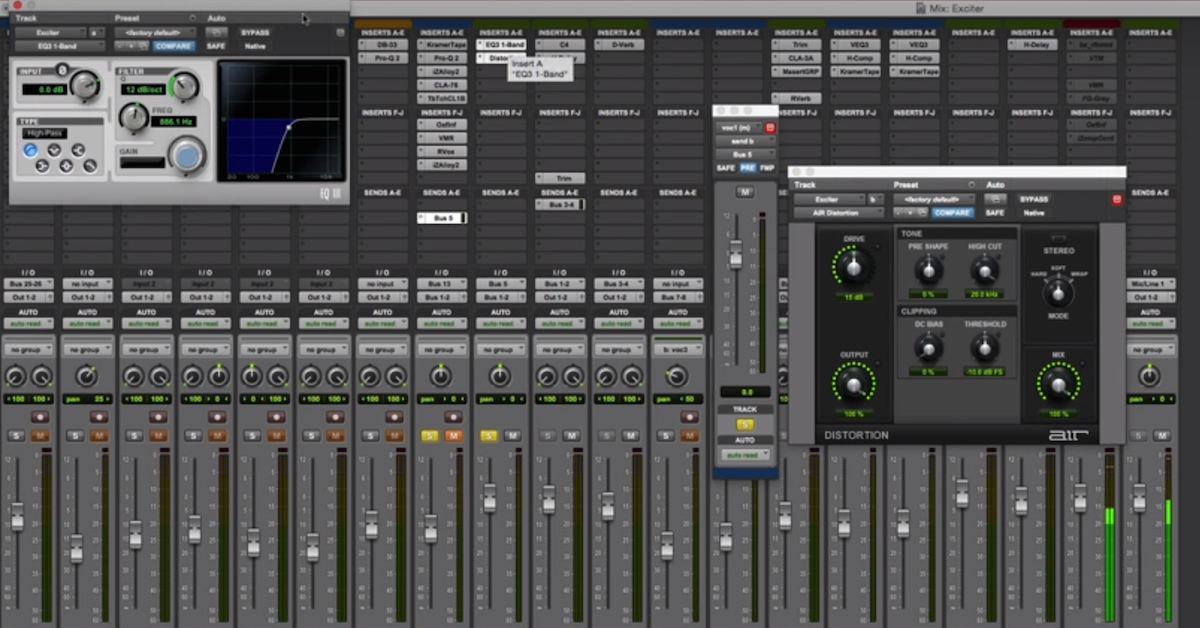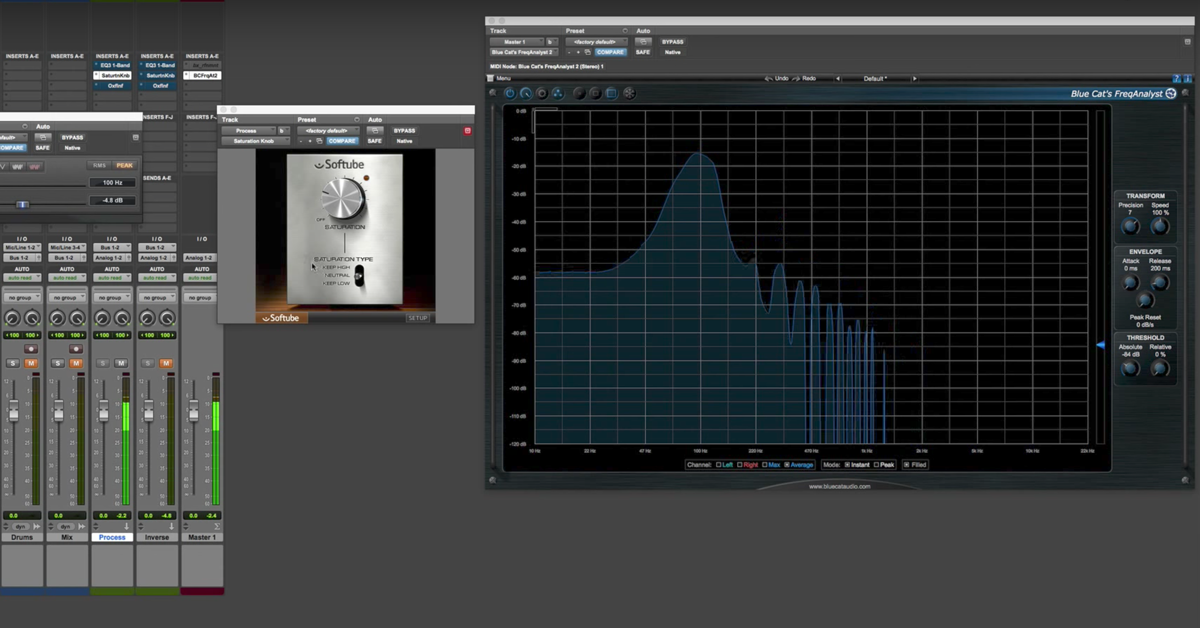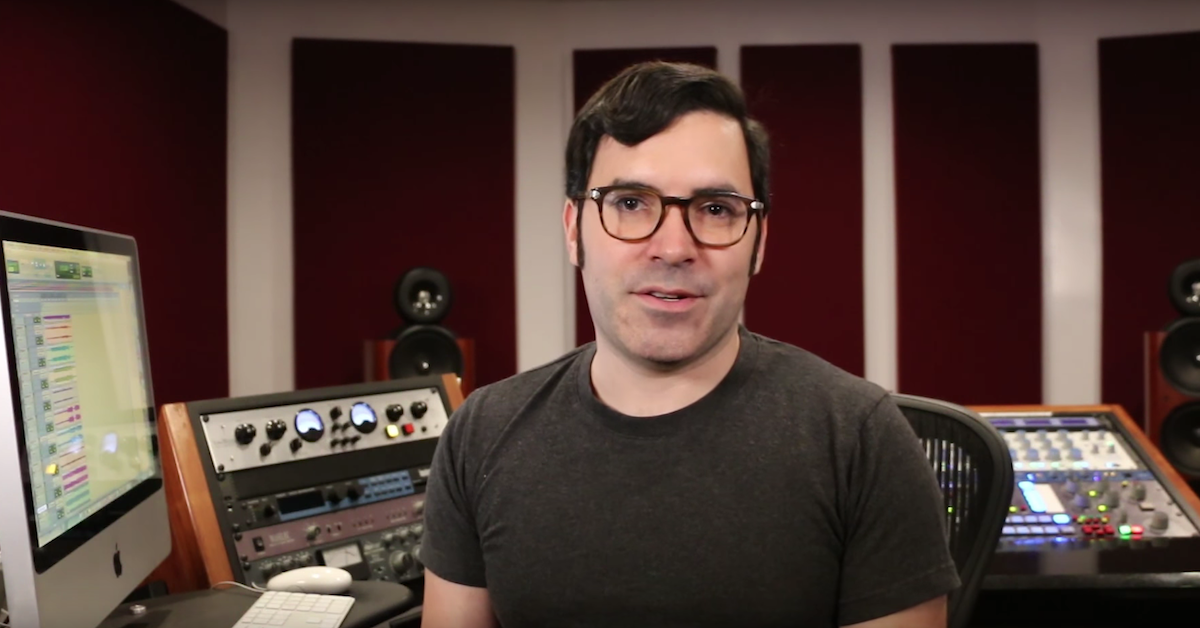8 Exciter and Saturation Plugins for Mastering
Article Content
So far in this series, I’ve covered some of my favorite and most used compressor, limiter and equalizer plugins — three types of processing vital to any mastering engineer.
It’s important not to forget about other processors that can add harmonic content to your material. You might hear them referred to as exciters, enhancers, saturators, maximizers etc. — regardless of the name, these plugins can be great for adding tone, vibe, impact, and character to your masters.
1. UAD Ampex ATR-102 and Studer A800
These are emulations of the classic tape machines, and while they are two separate and very different plugins, I find them both to be essential — and wanted to make room for the many other great processors — so they occupy the top spot.
They’re great for both mixing and mastering, and can be used on individual tracks or entire mixes. For a majority of the time we’ve been listening to recorded music, tape has been involved, and these two plugins help achieve that famous sound.
The ATR-102 features 4 different tape types, 4 tape speeds, and dozens of other features that make this an incredibly deep tool for adding color and tone to your material. I find that it helps add a sense of clarity and separation between instruments in a way that no other plugin does. It’s definitely a hi-fi sound, but the brightness can be dialed back by changing the tape speed or using the shelf EQ.
The Studer A800 is a bit more warm and vibrant. I find myself using this one on individual tracks or sub-auxes more than the ATR-102, but when material needs to sound more rolled off, saturated, and vintage, the Studer is unmatched.
Unique features: The sheer depth of these two plugins makes for a virtually endless amount of sonic capabilities. The Studer is simpler, and I find myself tweaking the bias setting to achieve a very open, airy sound. The ATR-102 has really unique tape effects like wow, flutter and crosstalk. While you may understandably hesitate to use these on a master, in the rare case when you absolutely need your material to have a subtly warped, analog feel, look no further.
2. SPL Vitalizer MK2-T
The Vitalizer MK2-T is a tried and true hardware unit that is common in mastering, and the plugin does a similarly great job of adding air and presence to your material. There are also useful compression and drive controls. If your source lacks excitement and definition, the Vitalizer is a quick fix thanks to it’s intuitive interface.
Unique feature: The stereo expander on the Vitalizer is as good as on any plugin I’ve found. If I want to widen the stereo field in mastering, this is the tool I reach for.
3. Sonnox Oxford Inflator
When you need to add impact and modern size to your material, look no further than the Inflator. It adds a tasteful curve, even when it’s pushed pretty hard. Although it can make virtually any source sound and feel more exciting, it really excels with electronic music.
Unique feature: Aside from Input and Output controls, it has “effect” and “curve” faders. That’s it. What I find to be most unique about the Inflator is its ability to enhance program material, even with such limited controls. There are very few plugins that are essentially “sound better” faders/knobs, and this is definitely one of them.
4. iZotope Ozone 7 Exciter and Vintage Tape
The Exciter alone has warm, retro, tape, tube, triode, and dual triode modes. More impressively, it’s a multiband exciter, in case you want to add any of these characteristics to specific frequency ranges. The vintage tape plugin is yet another iZotope plugin with flexible digital-style controls, but a warm analog sound.
Unique feature: Not only does the exciter work in mid-side mode, the exciting can also be added in parallel, per frequency range. The gain match feature on both plugins can help you determine if the changes you’re making are actually enhancing the material, or just increasing volume.
5. PSP Vintage Warmer 2
The Vintage Warmer is also a compressor/limiter in addition to being a great tool for adding tasteful saturation to material.
While there are many controls, everything is laid out in such a way that’s easy to understand. Both the sound and metering are excellent. This one can go from adding tasteful saturation to expressive gnarly tones, which can also make it a valuable mix tool.
Unique feature: Being able to choose the frequency at which you want to add drive (at both high and low frequencies) can really help when only a certain frequency range needs saturation and excitement.
6. UAD Brainworx bx_masterdesk
The bx_masterdesk is a simple, all-in-one solution for those in need of an in-the-box mastering processor. The GUI resembles an analog mastering console, and allows one to work quickly and efficiently. Sonically, the plugin is equally impressive; between the four compressor options (which can be blended in parallel), the incredibly smooth 4-band EQ section, the helpful resonance filters, and the unique “foundation” control, one can quickly add energy and sculpt the tone of their program material. The bx_masterdesk doesn’t stop there, though, and is loaded with a variety of additional features including a high-quality de-esser, the acclaimed brainworx M/S features including Mono-Maker and Stereo Enhance, and a THD control for adding tasteful saturation to your masters. The harder you drive the volume control, the harder the processing stages are hit, so the bx_masterdesk truly does behave like an analog console.
The metering, functionality and sound quality are all of the excellent quality one would expect from Brainworx and UAD. For anyone looking for an uncomplicated, versatile, juicy-sounding in-the-box mastering processor, I strongly recommend giving the bx_masterdesk a test drive.
Mastering Tip:
While bx_masterdesk was designed for the purpose of mastering entire mixes, don’t shy away from using them on groups like drum or vocal buss. I had great success recently using it on a backup vocal subgroup. What’s great about it is that there are so many high-quality processors located in a singular easy-to-use plugin. I used the equalizer section to carve out the low end, the de-esser to handle sibilance, the THD to add some pleasing grit and color, and the stereo enhance function to add some subtle width. It’s not abnormal for me to process backup vocals this way using a variety of tools, and I love the convenience of being able to handle everything within one plugin.
7. iZotope Ozone 9 Exciter
iZotope’s latest update to their all-in-one mastering plugin suite includes several new modules that make in-the-box mastering even more intuitive and effective including Master Re-balance and Low-End Focus. Updated in this top-notch multiband exciter module include tweaks to the analog-modeled Retro, Tape, Warm and Tube modes. I really enjoy the flexibility of multiband processing and the fact that you can choose different saturation modes for each band, so if you want to add some analog tape vibe in the low end, and tube warmth in the upper mids, you are quickly able to do so, and with great precision and control over the frequency crossover points.
You can use the exciter in mid/side mode, which I often do when mastering. Additionally, you can ‘solo’ the individual bands, so you can hear exactly what the processor is imparting onto the signal, and I find this feature quite helpful when dialing in exactly how much I processing I should be doing. Ozone 9 is, of course, marketed as a tool for mastering, but I’ll regularly fire it up when at the mix stage, and even use it on individual elements such as snare drum, bass guitar, and vocals, in part because of the tonal shaping qualities of the exciter.
Mastering Tip:
Learn how the ‘amount’ and ‘mix’ controls interact and affect the signal: ‘Amount’ functions similar to a gain control — the higher the amount, the more drastic saturation will be achieved. ‘Mix’ functions as a wet/dry blend. I tend to use the exciter very subtly when mastering, and in the event I’m using higher ‘amount’ values, I’ll definitely dial back the overall effect using the ‘mix’ slider. Additionally, make sure to pay attention to the order in which you use the models in Ozone 9. I ensure that the maximizer (which functions as a limiter) is the last module in the chain, as I don’t want any gain to be added with the exciter (or any other module) after the limiter ceiling has been set.
8. UAD Vertigo VSM-3
The VSM-3, developed by Brainworx and Universal Audio is an emulation of an esoteric (and pricey) rack-mountable saturation unit from German company, Vertigo Sound. It’s a two-stage harmonic generator with mid-side capabilities. You’ve got extensive control over 2nd and 3rd order harmonics sections, each of which have their own unique sonic qualities, and each can go from tastefully subtle, to blistering and brash. The THD Mixer section allows one the ability to blend between the two stages, and you can choose between using them in series or parallel. Within each of the sections, you can target specific frequency ranges, so if you want to add a bit of warm saturation to the bass, and some crunch higher up in the frequency spectrum, let’s say on electric guitars, it’s fairly easy to dial in. In that case, I’d use the 2nd Harmonic FET crusher to add drive to the lows (bass), and the 3rd Harmonic Zener Blender and target the high mids. 2nd order harmonics are more tame and subtle in nature, whereas 3rd order have more ‘bite’, so this would be a useful application of the VSM-3.
There are so many unique tones available within this plugin–it’s a sort of saturator, equalizer, compressor all-in-one. It works great on individual tracks, sub-busses, or at the mastering stage, allowing you to bring attitude and vibe to dull, and lifeless mixes. If you have limited experience using saturation at the mastering stage, I do recommend avoid getting too heavy-handed with the VSM-3, as I mentioned, it can go from an exquisite polish to absolutely destroying transients unless you’re careful.
Mastering Tip:
Use it for Mid/Side Saturation: When mastering, I use saturation to enhance vibrancy and improve relationships between components of the mix. On a recent rock master, the sides featured crunchy, hard-panned electric guitars, and the vocal (which sat up the middle) was a bit lacking in character. I enlisted the VSM-3, adding a bit of brightness and via the 3rd Harmonic Generator, only focusing on the mid, disregarding the sides. Mid/Side processing can be extremely useful when mastering, and this unique saturator is no exception.
Honorable Mention
Although somewhat limited due to only being compatible with Pro Tools, the original Phoenix and its successor helped engineers add analog tape saturation and vibe to material long before most competitors. Simply put, it’s to this day, a great sounding plugin.







